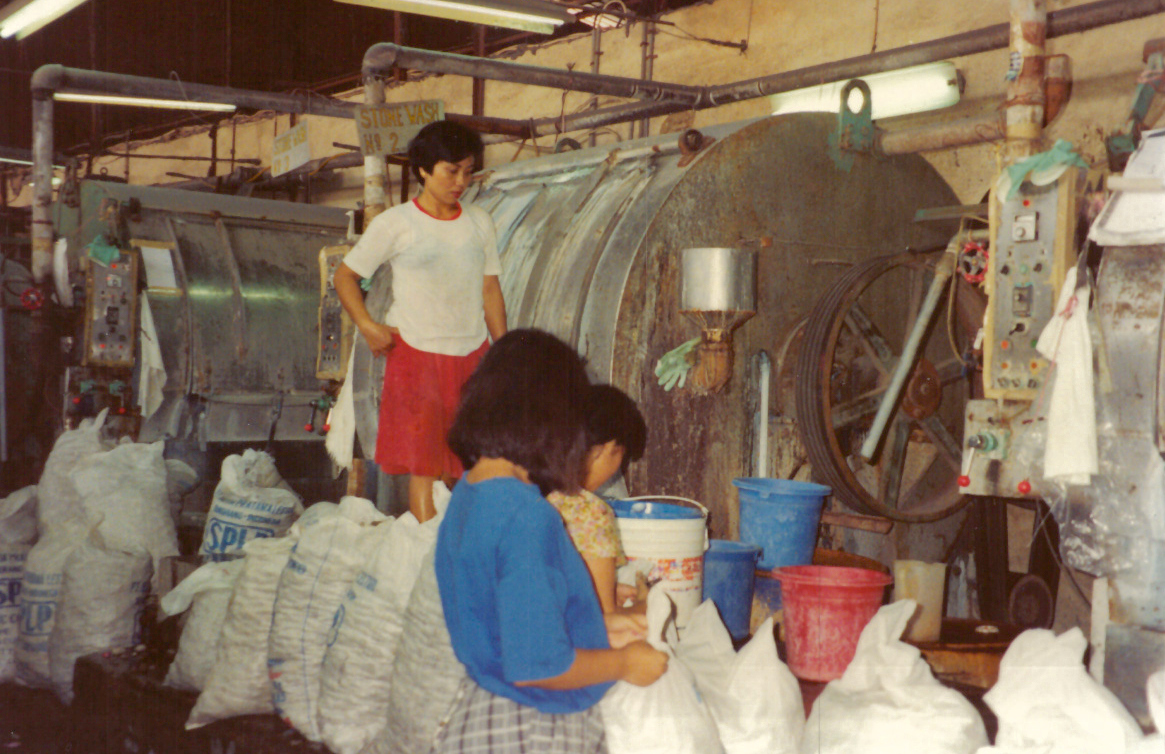A pair of Levi’s uses nearly 1,000 gallons of water in its entire life cycle, from growing the cotton to consumer care. – Michael Kobori, Vice President, Sustainability at Levi Strauss & Co [LS&Co.]

It can’t be ignored, from growing cotton, through manufacturing, and consumer care at home, the industry and the consumer uses a significant amount of water. About 50 percent of the water used during the life cycle of a pair of jeans comes from consumers washing them.
I worked for LS&Co. between the years 1989-1994. As a Product Manager, I traveled the world to source both material and garment production for sewing and finishing factories.
I know first-hand that LS&Co. has been a pioneer and progressive company when it comes to the environment and social responsibility. In 1991, they were the first multinational apparel company to establish a comprehensive workplace code of conduct, known as our Terms of Engagement, for their manufacturing suppliers, and, as they would say, have “a long history of firsts” of leadership and making a difference to the community.


The images that you see in this feature were from my 1992 Hong Kong sourcing trip. Stonewashed and acid washed denim products, at the time, were in high demand. My visit to the laundry factory captured the work [finishing] in progress and shed light on the high usage of stones, water, and chemicals.
Stonewashed and acid washed jeans were popular fashion trends in the 1970’s and 1980’s, respectively. By the 90’s, the reduction of pumice usage and the growing disposal of its chemically-tainted residue triggered a search for novel methods, notably the use of alternative abrading materials or machines and the use of cellulose enzymes. [Reference: Wikipedia]
Recent statistics indicate that it takes more than 5,000 gallons of water to manufacture just a T-shirt and a pair of jeans. The textile industry is one of the top 3 water wasting industry in China, discharging over 2.5 billion tons of wastewater every year.
Today, LS & Co. and many other ‘conscious brands’ have developed and implemented initiatives to mitigate the impact of water and toxic chemicals on the environment throughout their supply chain.

Levi’s is doing their part in addressing the issue of water scarcity with their Water<Less™ initiative. They state that this reduces the amount of water used to manufacture a pair of jeans by up to 96 percent. Since launching the Water<Less™ process, the company has saved more than 1 billion liters of water in the manufacturing of LS&Co. products, including 30 million liters of fresh water saved through reuse and recycling. By 2020, the Levi’s® brand aims to make 80 percent of its products using Water<Less™ techniques, up from nearly 25 percent today.
As consumers we can do our part in water conservation – the obvious – use less water, which includes washing our jeans less.
Images: Courtesy of Rhonda P. Hill LS&Co Archives – Hong Kong Sewing and Laundry Factory – 1992
Source: Levi Strauss & CO
More on this topic: 5 Fashion Industry Manufacturers Tackling Water Consumption | Ethical Fashion Forum
Stay connected for more on how the fashion industry is reducing the environmental impact of clothing.
Connect to EDGE’s world! Like us on Facebook, follow us on Twitter and Instagram.

